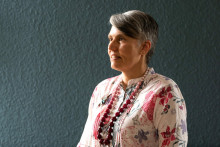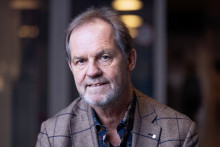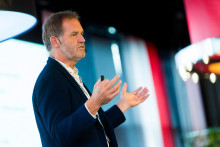Negative Emission Technologies
Negative Emission Technologies refer a range of techniques for removing carbon dioxide (CO2) from the air. The MESA+ institute, with professor Albert van den Berg together with Wim Brilman and Hans-David Wendt as the main initiators, started a new research programme to develop such technologies. The programme involves various research groups from all faculties of the University of Twente.
Albert van den Berg decided to start the programme because he was ‘personally motivated to do something about climate change’, as he says. ‘I was walking with my daughter in the Swiss mountains along a glacier. We needed to get to a hut that was built a hundred years ago right on the glacier, but now we had to climb 150 meters up to get to the hut. That means that 150 meters of ice disappeared within one hundred years. It was very confronting to see this huge change. We have to do something or our kids will have nothing left.’
More than energy transition
Energy transition will be a big part of the change, but the UT professor believes we need to do more than switching to more sustainable energy sources. ‘The human kind has used all the oil, gas and coal out of the earth to produce energy. Very cheap energy which we used well to develop ourselves. Now that we have good alternative energy sources in for example sun and wind, after “borrowing” fossil fuels we need to “pay back” to the earth. We need to get CO2 out of the atmosphere and back to the earth.’
That is where the ‘negative emission technologies’ (NET) come in. ‘We need to remove CO2 from the air on a large scale in order to meet the Paris agreement quotas,’ says Van den Berg. ‘For that we need to deploy negative emission technologies on a large scale within ten years. And that means we need to investigate and develop them now.’
‘Not one silver bullet’
NET have many shapes and forms. ‘There are many options,’ says Van den Berg. ‘In our group we have chosen to focus on the ocean, because the majority of CO2 is absorbed by the ocean – 30% is taken care of by phytoplankton. We want to investigate the carbon cycle in the ocean on a single cell level. However, there are other groups at the UT that work on different NET options – such as absorption of CO2 in clay materials, biomass conversion and capturing CO2 directly from the air using membranes. There is not one silver bullet. All the options together will make a solution.’
'All the options together will make a solution'
‘The University of Twente does a lot in this regard. There is a lot of focus on sustainability, we have excellent research group in the process technology and nanotechnology fields as well as in the faculties of ITC and BMS, and NET fit very well into this picture. We have many talented people in this field and we need to train younger people to embrace these technologies,’ continues the professor. ‘Which is why I think that a coherent and visible programme at the UT can make a difference. TNW faculty is at its core, but I imagine that many groups from other faculties will join. The initiative started less than a year ago, strongly motivated by the sense of urgency, and I am very glad that the Max Plack Center already financed the first PhD on this in our group. Now we want to scale it up and make a plan on what our focal points will be.’







